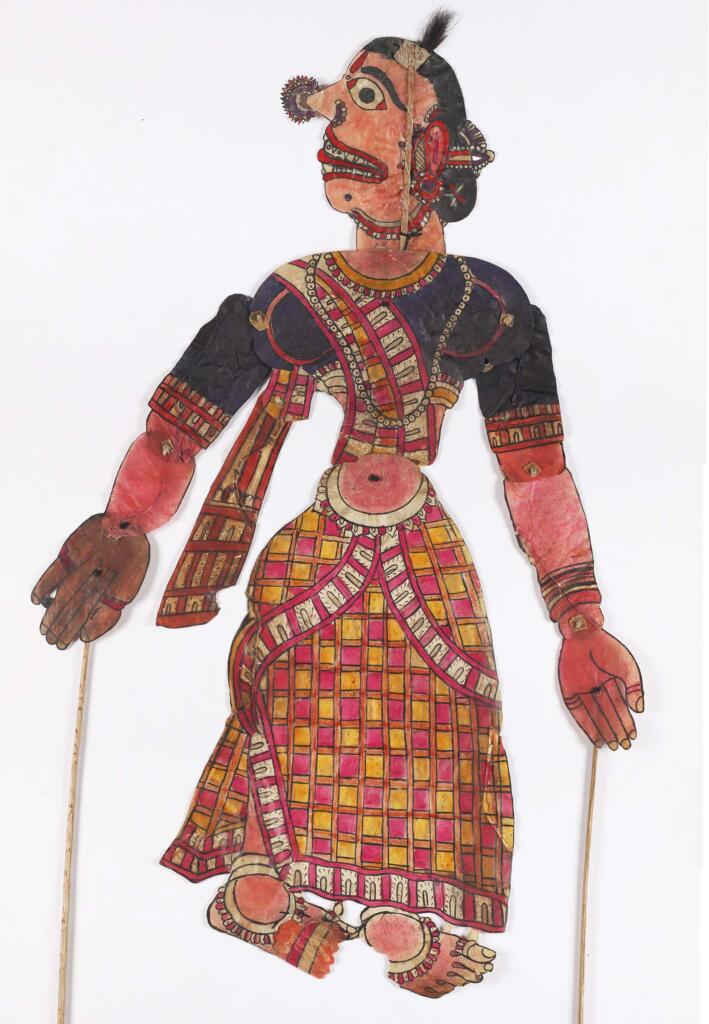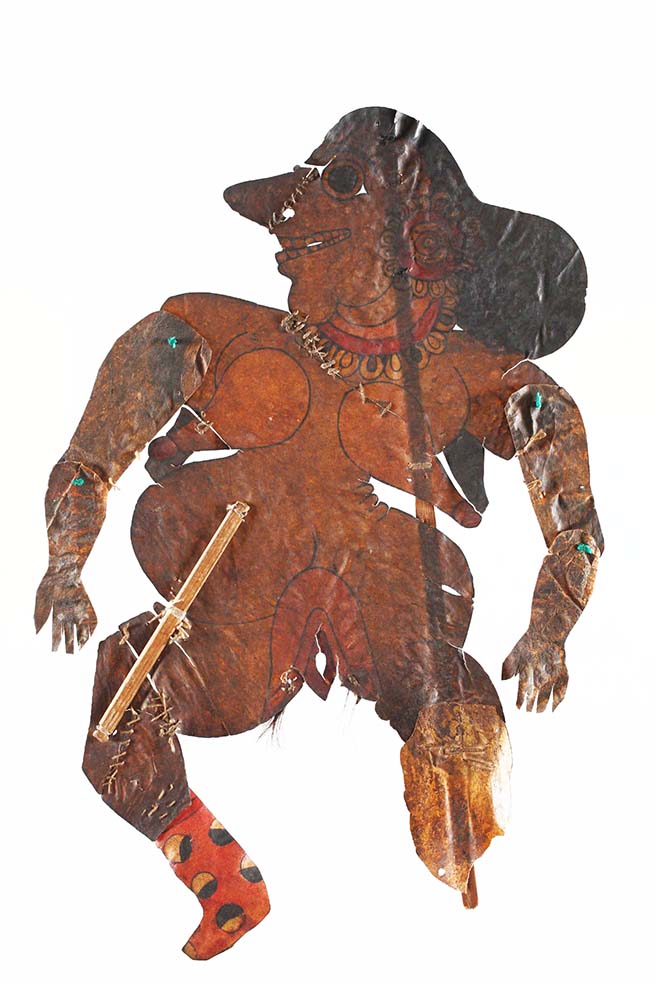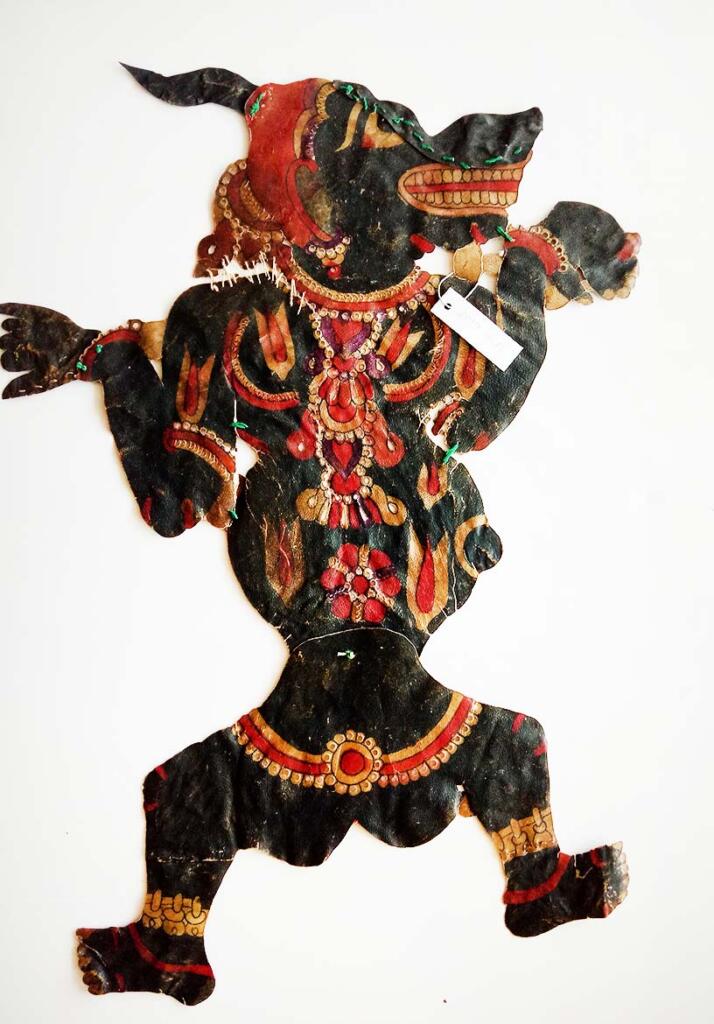Click on the video above to listen to heritage interpreter and designer Sarita Sundar talk about her favourite object from the Sarmaya archive, a Tholu Bommalaata jester-puppet
In between their narration of the great epics, Tholu Bommalaata artists like to give the audience a break from all the cosmic plot-twists and hefty sermonising with a splash of the silly. Enter the jesters.
The most popular of the lot is a comic duo in the tradition of Punch and Judy; a man and woman engaged in an eternal battle of wits in the best tradition of slapstick comedy. Ketigadu (from the word Killekyatha, which refers to puppeteers in Maharashtra) and Bangarakka usually enter the performance right after the opening and entertain the audience with stories, dances and witty comments. They often quarrel, narrate crucial plot points of the epic to whet appetites, engage with the crowd and make jokes much like a stand-up comedian would. Their act includes political (and satirical) commentary and in recent times, they’ve taken to performing hit songs from Indian movies too.

Bangarakka, by S Chithambara Rao © Sarmaya Arts Foundation
Ketigad is a short, dark figure, who appears and moves like a monkey, often shown with a tuft of hair on the top of his head. This is right above his forehead where the religious symbols on the body are painted. The tuft is significant as it is viewed as mockery of the Brahmins. In Karnataka, the puppeteers belonging to the Killekyatha caste put a lock of their own hair on the head of the puppet. This became a tradition and some old puppets still carry locks of their original puppeteer’s hair!

Kechani, a female jester by an unknown artist © Sarmaya Arts Foundation
Bangarakka is Ketigadu’s female counterpart. She’s short and usually shown wearing a huge nose ring and skimpy clothes—the overall effect is meant to be repulsive, rather than seductive. This has been an evolution for the character. Bangarakka was not always shown this way. Scholars believe that she was once depicted as a beautiful dancer. While her character has always been that of a gossiping and scandalous person prone to gaslighting a situation, her features were originally charming. The artist highlighted the ugliness of her character by contrasting it with the beauty of her form. Her wild nature and brazen sexuality remained a constant counterfoil to the ever-chaste Sita in the Ramayana. It’s only sometime during the 1980s that Bangarakka’s outer form was made to match her grotesque nature. Perhaps the artists felt modern audiences would not take the time to understand any further nuance.

Shilaketa, a puppet by S Chithambara Rao © Sarmaya Arts Foundation
Traditionally, the puppets were shown having an explicit sexual nature. Bangarakka cheated on her unwitting husband, who is shown to be a simpleton. In the past, Bangarakka’s husband was Juttupogadu and Ketigadu was her lover. In the older shows, Ketigadu was also shown raping Juttupogadu—unfortunately, rape was a common theme among the jesters of the Tholu Bommalaata universe. Male puppets too were sexually explicit. Many were endowed with huge penises. And yes, these could be operated with a string too!
The traditional jesters’ act began to be toned down after the 1970s, when Tholu started to receive patronage from government and civic bodies. With that, the sexual and violent jokes gave way to a more PG-13 kind of comedy. Whatever the form, the role of the jesters can’t be written completely away from these performances. Perhaps their ridiculous forms and base concerns are crucial in making the divine protagonists of the show appear even more godly. Or perhaps, the puppet-masters understand that an audience can only take so much preaching before it begins to get restive. Then it’s time to send in the clowns.



